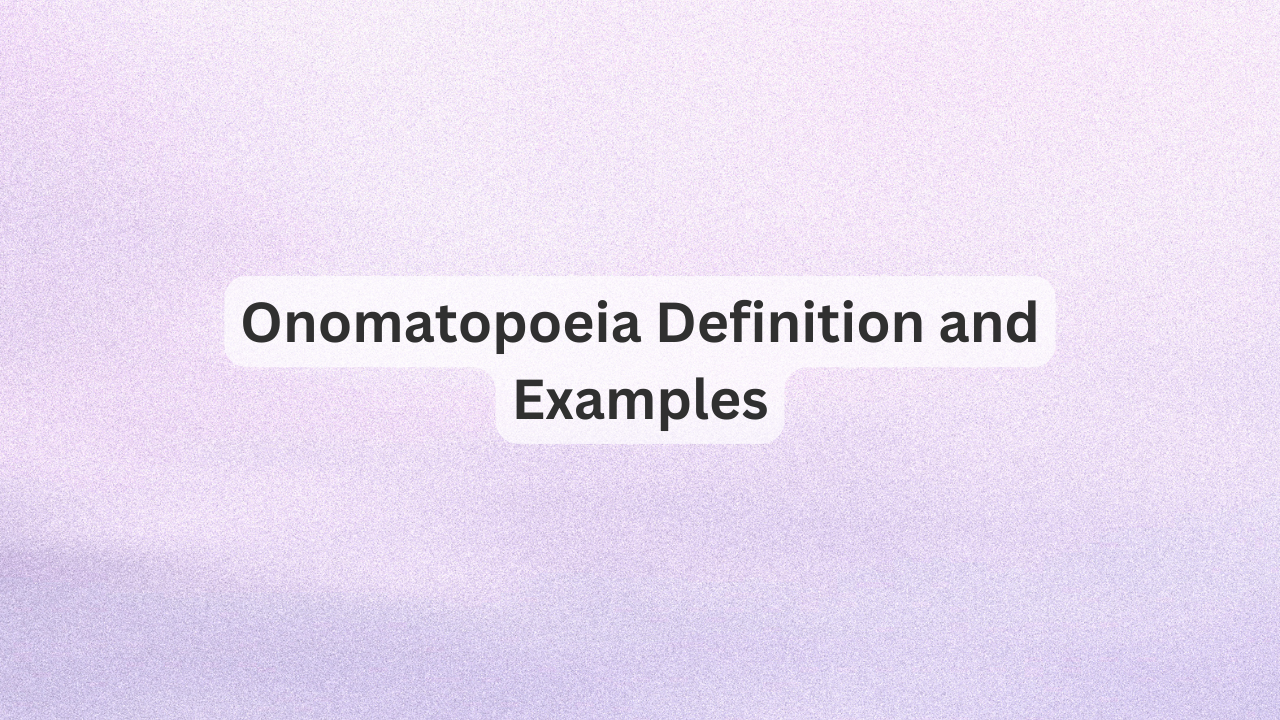Ever heard a word that sounds exactly like what it describes? That’s the magic of onomatopoeia—the literary device that lets words be as noisy, crunchy, or zippy as they sound. In a world of silent letters and fancy phrases, onomatopoeia is the rule-breaker that says, “Why not let the word sound like what it’s describing?” You can almost hear the fun, right?
From comic book classics like “BAM!” and “POW!” to everyday sounds like buzzing bees and sizzling bacon, onomatopoeia turns writing into an auditory experience. Let’s dive in and explore how these words bring a little noise to the page!
Onomatopoeia Definition: When Words Sound Like What They Mean
Onomatopoeia is when a word imitates or resembles the sound it represents. Essentially, it’s language’s way of getting a bit loud—whether it’s a buzz, splash, or bang. These words make writing more vivid by tapping into our sense of sound, making the reader feel like they’re right in the middle of the action.
Onomatopoeia Examples That Pop, Crackle, and Snap
- Boom!
(The sound of an explosion—or your mind being blown by this article.) - Buzz
(The unmistakable sound of bees doing their thing. Or your phone on vibrate.) - Crash
(When something falls, breaks, or just makes a lot of noise.) - Sizzle
(What bacon does when it hits the pan. Also known as the sound of pure joy.) - Drip
(The slow, steady sound of water falling. Could be a faucet, could be the start of a horror movie.)
Why Onomatopoeia Is So Much Fun
Onomatopoeia is language’s sound effects, bringing a little action to your writing by making it as noisy or vivid as the real thing. It’s perfect for capturing sounds in nature, adding punch to action scenes, or just giving your writing a more playful vibe. Whether you’re writing poems, comics, or even describing your cat’s meow, onomatopoeia brings the noise.
It’s also a great way to make your writing more immersive. Why say “the bell rang” when you could say “the bell went ding-dong,” pulling your readers into the moment?
Frequently Asked Questions
Can onomatopoeia be used in everyday writing?
Absolutely! Onomatopoeia works in poetry, fiction, advertising, and even casual conversations. Any time you want to describe a sound—whether it’s a tick-tock or a clatter—this device adds flavor to your writing.
What’s the difference between onomatopoeia and alliteration?
Onomatopoeia focuses on words that sound like the noise they represent (like “buzz” or “boom”). Alliteration, on the other hand, is the repetition of the same consonant sound at the start of words (like “Peter Piper picked a peck of pickled peppers”).
Are there silent forms of onomatopoeia?
Well, no—onomatopoeia is all about sound! If you’re describing a silent scene, you’d use different literary devices like imagery or metaphors. But when it comes to noise, onomatopoeia is your best friend.
Conclusion
Onomatopoeia brings a splash (literally) of excitement to your writing by letting words mimic the sounds they describe. Whether it’s the crash of thunder or the chirp of birds, this literary device turns writing into a soundscape, making your stories, poems, or even texts more vibrant and alive. So, go ahead and throw in a whoosh, pop, or clang the next time you write—it’ll be music to your readers’ ears!
